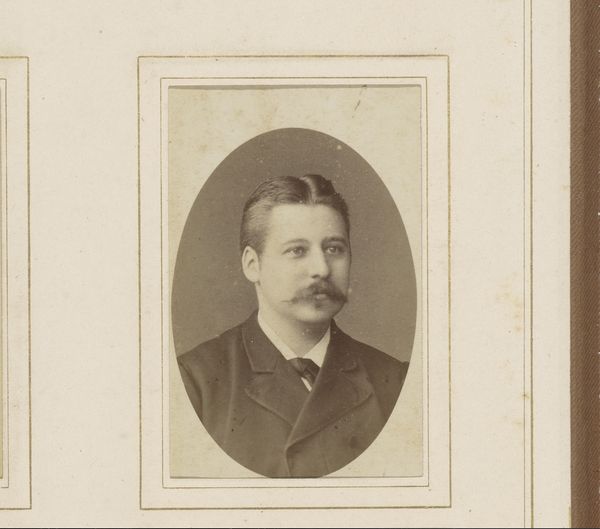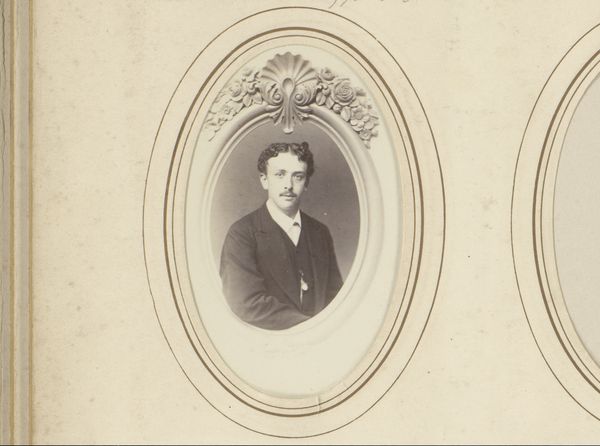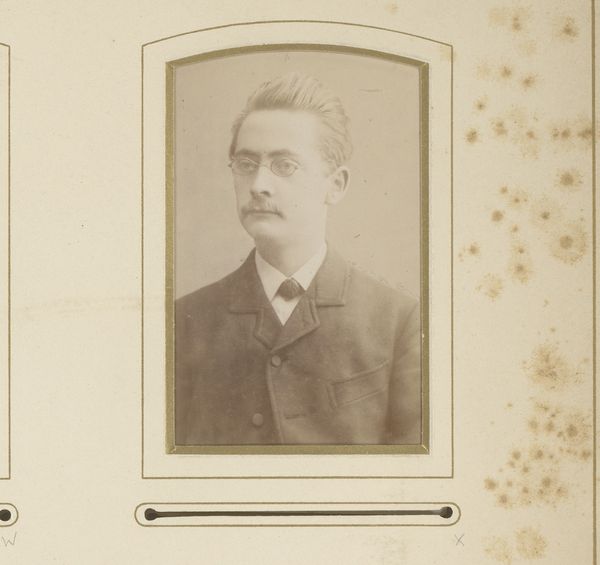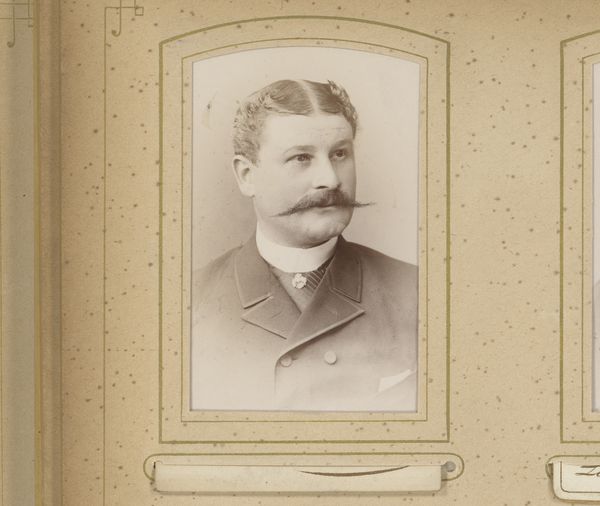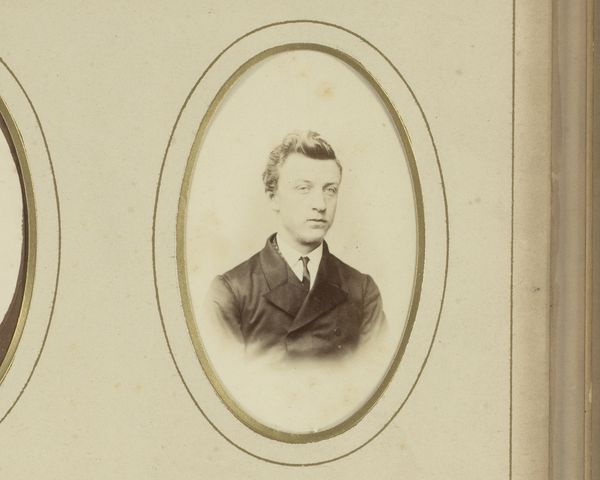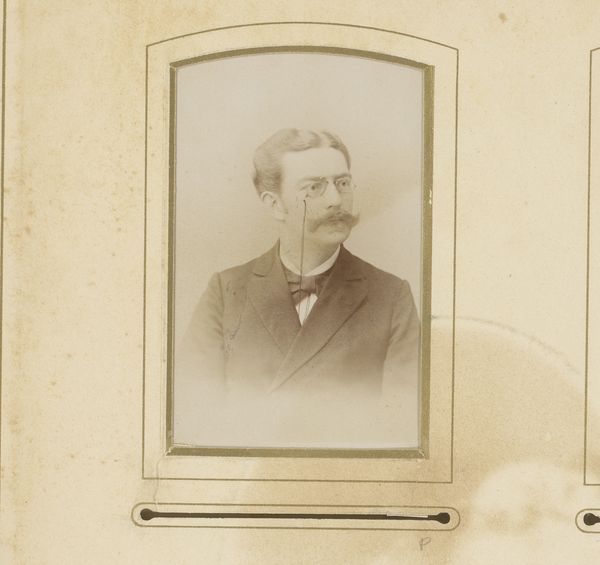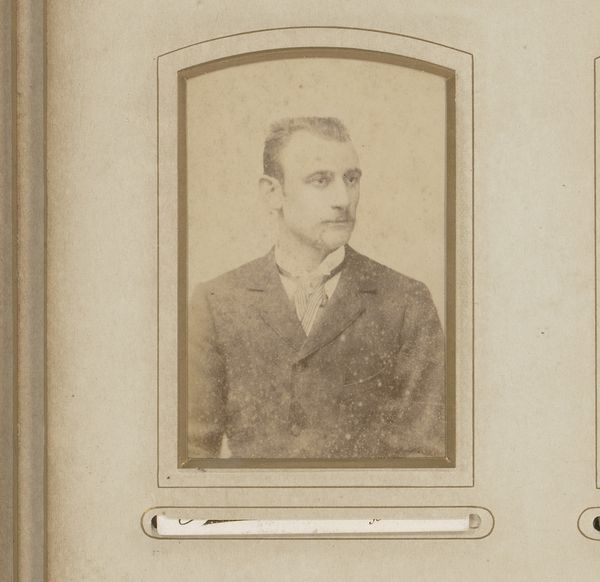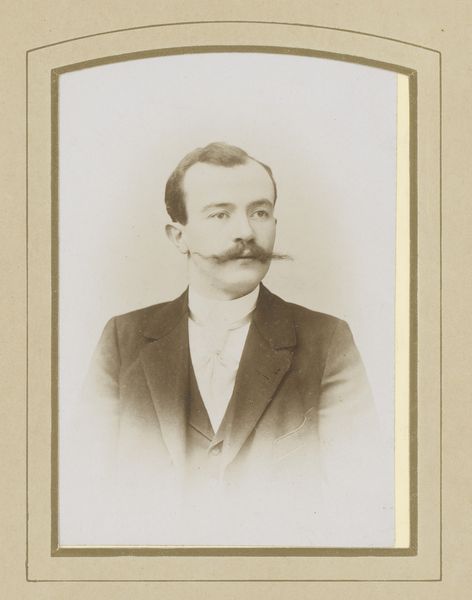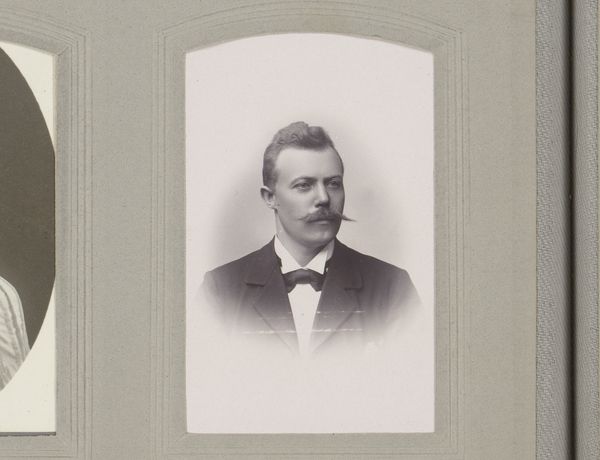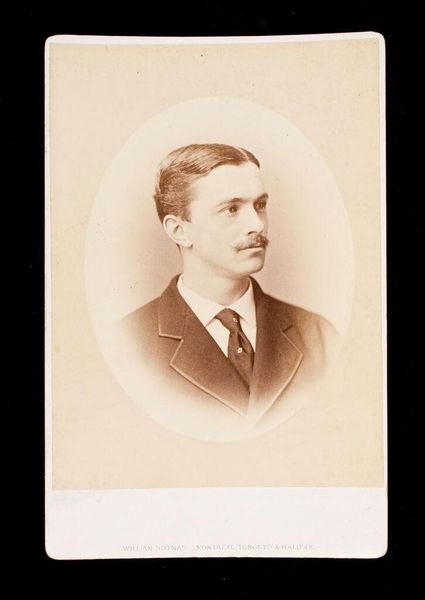
photography, gelatin-silver-print
#
portrait
#
photography
#
historical photography
#
gelatin-silver-print
#
19th century
#
realism
Dimensions: height 84 mm, width 51 mm
Copyright: Rijks Museum: Open Domain
This portrait of an unknown man was made by Willem Cornelis van Dijk sometime in the mid-19th century, using a photographic process. Photography in this era was far from the point-and-shoot ease we know today. It was a labor-intensive, alchemical process. Each image required careful preparation of glass plates with light-sensitive emulsions, precise timing during exposure, and skilled development in a darkroom. The final product, like this portrait, was a unique object, a testament to the photographer’s expertise. Consider the social context: photography was becoming increasingly accessible to the middle class, allowing individuals to record their likenesses and preserve memories. This portrait, with its formal composition and attention to detail, speaks to the sitter's desire to present himself in a dignified manner. The very act of commissioning a photograph was a statement of social standing. By understanding the materials and processes involved in creating this image, we gain a deeper appreciation for its historical and cultural significance, blurring the lines between artistry, craft, and social documentation.
Comments
No comments
Be the first to comment and join the conversation on the ultimate creative platform.
